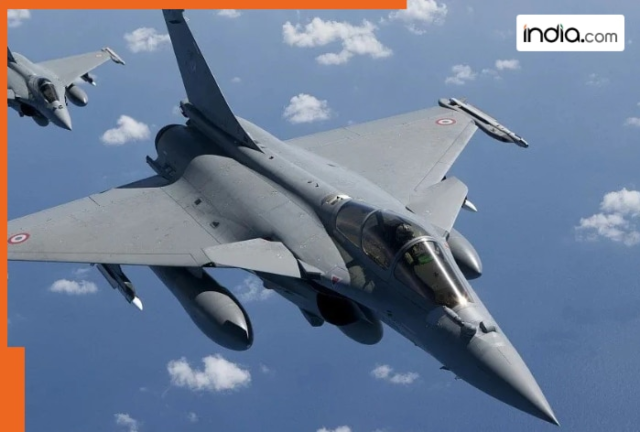BrahMos-A supersonic cruise missiles delivered devastating strikes with their Mach 2.8–3.0 speed and extended range of 450–800 km.
New Delhi: The Indian Air Force (IAF) conducted a significant operation targeting Pakistan Air Force (PAF) bases during the recent India-Pakistan conflict, Air Forces Monthly, a leading military aviation magazine reported in its latest issue. The magazine is published by Key Publishing Ltd in Stamford, Lincolnshire, United Kingdom.
In its latest edition, the magazine details how IAF Rafale jets fired 10 SCALP-EG cruise missiles as part of Operation Sindoor. The operation saw a devastating combination of SCALP-EG and BrahMos-A missiles working in tandem to strike some of the PAF’s most secure air bases, dealing a severe blow to Pakistan’s air defense capabilities.
Operation Sindoor was a retaliatory campaign launched in response to a Pakistan-backed terror attack in Pahalgam, Jammu and Kashmir, on April 22, 2025, which killed 26 civilians.
The IAF’s Rafale jets, operating from bases such as Ambala and Hasimara, launched 10 SCALP-EG (Système de Croisière Autonome à Longue Portée, also known as Storm Shadow) cruise missiles targeting critical PAF infrastructure, including command centers, hardened aircraft shelters, and runways, according to the Air Forces Monthly report, corroborated by sources from the Indian Defence Research Wing (idrw.org).
Here are some of the key details:
- Of the 10 SCALP-EG missiles fired, nine scored direct hits during Operation Sindoor
- One missile reportedly malfunctioned due to an engine failure, a rare occurrence for the MBDA-developed missile known for its reliability.
- BrahMos-A supersonic cruise missiles, launched by modified Su-30MKI fighters, faced no such issues
- BrahMos-A supersonic cruise missiles delivered devastating strikes with their Mach 2.8–3.0 speed and extended range of 450–800 km.
- The SCALP-EG’s low-observable design allowed it to bypass Pakistan’s Chinese-supplied HQ-9 and HQ-16 air defense systems
- Its inertial navigation system (INS), combined with GPS and terrain-referencing navigation (TERCOM), ensured precise targeting of high-value assets, such as a command post and two hangars housing F-16 fighters at Sargodha airbase.
- Satellite imagery from Indian firm KawaSpace and Maxar Technologies confirmed significant damage, including a direct hit on a hangar at Bholari airbase, which housed a Saab 2000 Erieye Airborne Early Warning and Control (AEW&C) aircraft and at least three F-16A/B Block-15 fighters.
The Air Forces Monthly report underscores the strategic significance of the recent strikes that severely damaged key Pakistan Air Force (PAF) bases, including Nur Khan (Rawalpindi), Rafiqui (Shorkot), Murid (Chakwal), Rahim Yar Khan, Sukkur, Chunian (Kasur), Jacobabad, Sargodha, and Skardu.
Additionally, radar installations at Pasrur and Sialkot were also hit. As part of a larger Indian Air Force (IAF) offensive, the operation successfully targeted 11 out of 13 major PAF airbases. Notably, the BrahMos-A missile made its combat debut, living up to its reputation as a nearly untraceable weapon thanks to its low-altitude flight path and supersonic speed.

















































